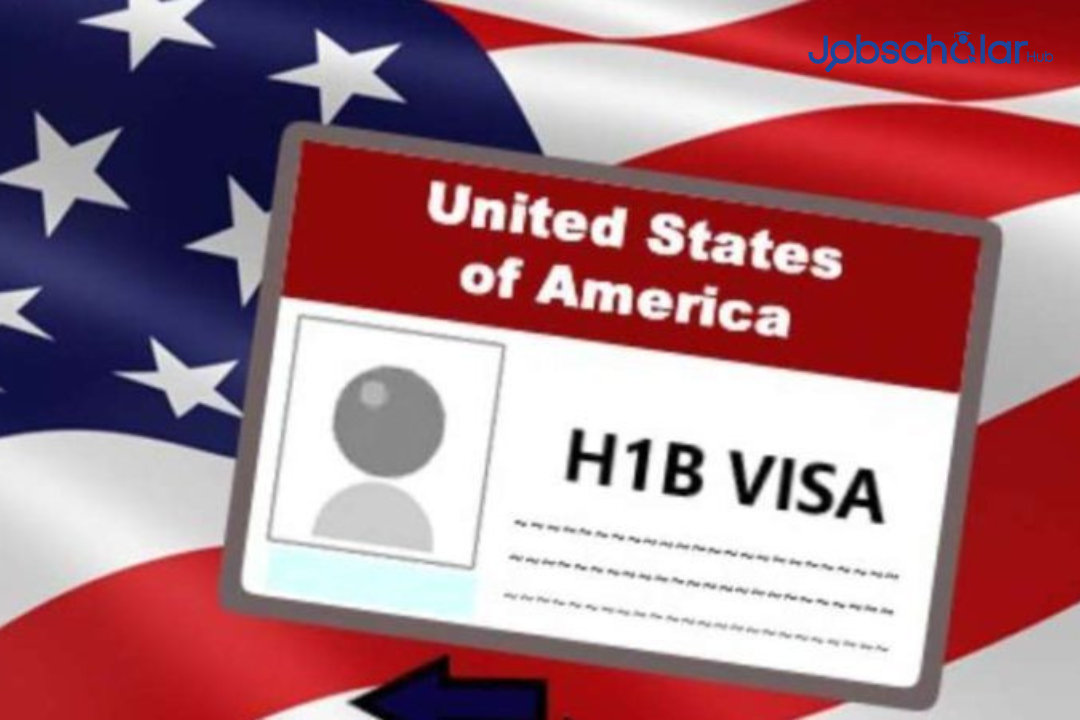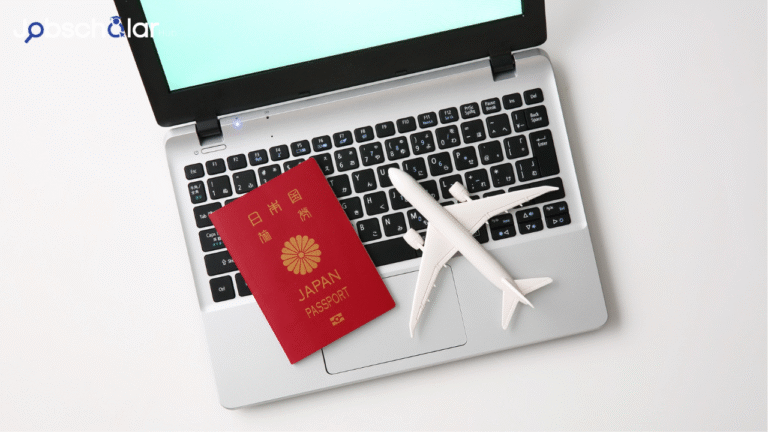The H-1B visa transfer process can seem daunting at the first step, especially if you’re already in the middle of a job change or weighing an alternative proposal. Well, breathe easy to know that there are hundreds of working professionals on H-1B visas who go through this process every year.
And although it may sound like a huge legal hurdle, it’s actually much simpler than that.
In this guide here, we’ll guide you through all the steps in easy-to-understand language. You’ll find out what to do, what to expect, and how best to avoid common mistakes. Whether you’re moving jobs or merely exploring options, this step-by-step guide will make you more confident about your next move.
Let’s break it down together and make the H-1B visa transfer process as stress-free as possible.
Table of contents
- What Is An H-1B Visa Transfer?
- Who is Eligible for H-1B Visa Transfer?
- What Documents Do I Need for the H-1B Visa Transfer Process
- What Is the H-1B Visa Transfer Process?
- How Much Does the H-1B Transfer Cost?
- Advantages of Successfully Changing Jobs on H-1B
- Maintaining H-1B Status Throughout Transfer Process
- Frequently Asked Questions
- Conclusion
- References
- Recommendations
What Is An H-1B Visa Transfer?
An H-1B visa transfer allows a foreign worker to port his or her H-1B visa from one employer to another. This means the worker can change employers and continue to be in the United States while working. H-1B visa transfer is also known as H-1B portability.
Key Features of the H-1B Visa:
- Specialty Occupation: Reserved for jobs that require specialized knowledge and at least a bachelor’s degree in science, engineering, or finance.
- Employer Sponsorship: Requires a U.S. employer to sponsor the foreign worker for them, showing need and wage compliance.
- Numerical Cap: Subject to yearly cap, with a portion reserved for U.S. advanced degree recipients; excess demand triggers a lottery.
- Validity Period: Up to 3 years, extendable to 6 years, and further extensions at the time of green card.
- Dependents: Spouses and unmarried minor children below 21 years can accompany on H-4 visas; some H-4 holders are eligible to work.
Read Also – Golden Years in Greece: How to Get Your Greece Retirement Visa
Who is Eligible for H-1B Visa Transfer?
To become qualifying for H-1B visa transfer, you must meet a number of easy requirements
- You need to be in current H-1B status. That is, your current H-1B visa should not have expired or been revoked when you apply for transfer. If your H-1B status has lapsed, you cannot transfer and would need to start all over again with a fresh H-1B application.
- You require a job offer from a new employer. The new employer should be a genuine U.S.-based company ready to sponsor your H-1B visa and submit a new petition on your behalf.
- The new employment should be a specialty occupation. This implies that the job should at least need a bachelor’s degree or its equivalent in a specialized area, and your qualifications should be commensurate with the requirements of the job.
- You must maintain lawful status. You were not to have worked unauthorized after your last entry into the U.S., and your new employer must file the transfer petition before your current authorized period of stay.
- The new employer must comply with wage and labor laws. They must file a Labor Condition Application (LCA) and agree to pay you the prevailing wage for your position and location.
If you are eligible, you can begin the process of H-1B visa transfer. Keep in mind that you don’t need employer approval to transfer, and you don’t have to apply for the H-1B cap or lottery when transferring to a new employer provided you are in valid status
Also Read – Golden Years in Greece: How to Get Your Greece Retirement Visa
What Documents Do I Need for the H-1B Visa Transfer Process
Once the H-1B transfer eligibility has been checked, the next most essential thing to do is to prepare and file the required documents. A documentarily well-prepared and detailed package of applications is to be filed so that an easy and successful transfer is ensured.
Also, knowledge of the timelines for the H-1B transfer will allow employers and employees to plan accordingly. Below is an overview of the documents needed from the new employer and the timelines:
Documentation Required from the New Employer
- Application of Labor Condition (LCA): LCA is central to the process in which there is a transfer of H-1B visa for compliance by US employers under labor and wage standards with the foreign workers that they allow into work.
- H-1B Transfer Petition: The employee must file the H-1B transfer petition (Form I-129) with USCIS for the new employer. The petition converts and allows the shifting from one employer to the other under H-1B visa sponsorship.
- Supportive Evidence: The employer has to submit supporting documents in order to establish the authenticity of the job offer and the nature of specialty occupation. This may include a detailed job description, evidence of the financial health of the employer, organizational chart, and relevant information about the activities of the company.
Documentation Required from the Employee
- Current H-1B Approval Between Oct. 2022 and to Date: The worker should accompany a copy of his/her current Form I-797 H-1B approval notice with documentation of his/her current status for the H-1B.
- Passport and Visa Information: The passport needs to be sent along with photocopies of the H-1B visa and the I-94 Arrival/Departure Record.
- Educational Requirements: The candidate employee selected for hiring must prove educational requirements as a degree, diploma, or transcript that accepts the attainment of minimum educational requirements for the specialty occupation.
- Resume/Curriculum Vitae: A resume or curriculum vitae explaining the job experience, skill, and qualification of the employee in detail must be included.
- Filing Timelines: The petition for transfer of H-1B should ideally be submitted prior to the expiration of the worker’s current authorized duration of stay or within 60 days from the end of his or her previous employment.
- USCIS Processing Time: H-1B visa transfer petitions processing time is variable and may take anywhere from a few weeks to several months. You can view current processing times of the USCIS website or consult one of our immigration lawyers. The employer may use premium processing to expedite the H-1B transfer petition, whereupon payment of a premium-processing fee, the USCIS will respond in a maximum of 15 calendar days.
Inaccurate or incomplete forms and documents can result in delays or denials. Smooth communication between the employer, employee, and attorneys-informing of potential pitfalls and completing the necessary forms diligently-is the key to a successful and smooth transfer of H-1B Non-Immigrant Workers.
Read Also – Germany Transit Visa: All You Need to Know Before Your Stopover
What Is the H-1B Visa Transfer Process?
The fundamental steps that H-1B visa transfer process encompass ensure a flow of benefits as defined under U.S. immigration law.Here’s a step-by-step analysis:
1. New Employer’s Job Offer
You should be hired by a potential new employer who is prepared to sponsor your H-1B visa for you before you start the process of transferring H-1B.
2. New employer files the LCA
The new employer must file a Labor Condition Application (LCA) with the Department of Labor. This is in order to ensure that the employer will pay the U.S. wage level and that the foreign worker’s employment will not have an adverse effect on the working conditions of U.S. workers.
3. New employer files Form I-129
The new employer will subsequently be obligated to submit Form I-129, Petition for a Nonimmigrant Worker, to USCIS. The petition shall be accompanied by the LCA and supporting documentation, such as your present approval of H-1B visa notice, your resume and qualifications proof.
4. USCIS Receipt Notice
Once the I-129 petition is accepted by USCIS, a receipt notice is issued. The notice allows you to start working for the new employer pending the petition.
5. USCIS Approval
You will receive an approval notice if USCIS approves the H-1B transfer petition. If the petition is denied, you must stop working for the new employer immediately and may be required to return to your previous employer or leave the U.S.
Also Read – H4 Visa Interview Questions: Avoid These Mistakes!
How Much Does the H-1B Transfer Cost?
This USCIS filing fee is in connection with transferring an H-1B visa petition. It may vary based on the USCIS website or the advice of our personnel. Usually, the filing fees for transferring the H-1B consist of the initial filing fee, H-1B education and training fee, and Fraud prevention and detection fee.
| H1B Transfer Fee | Amount |
| Basic filing fee for Form I-129 | $780 |
| The American Competitiveness and Workforce Improvement Act of 1998 (ACWIA) Fee | $750 – fewer than 25 full-time employees $1,500 – 25 or more full-time employees |
| Fraud Prevention and Detection Fee | $500 |
| Public Law Fee (114-113) | $4,000 *This fee is on if you have more than 50 employees and more than half are in H-1B, L-1A, or L-1B immigration status |
| Premium Processing Fees (optional) | $2,805 |
Advantages of Successfully Changing Jobs on H-1B
Job switching on an H-1B visa has several significant benefits, including:
Continuing Employment Status: Maintains employment status without the need for a fresh visa stamp until the H-1B transfer is completed, bringing stability and comfort.
No Visa Cap Constraints: Evades the H-1B visa cap, allowing people to secure employment prospects without being constrained by yearly quotas.
Career Development and Discovery: Offers scope for:
New jobs and responsibilities
Higher remuneration
More career development and progression
Geographic Mobility: Facilitates moving to:
Better employment prospects
Wanted lifestyle features
Greater ability to realize individual and professional goals
Legal Compliance and Job Security: Assures continuous work permission and grants access to a safer, fulfilling, and better career opportunity in the United States.
Also Read – Is the SB1 Visa Right for You? Everything You Need to Know!
Maintaining H-1B Status Throughout Transfer Process
It is advisable to maintain your H-1B status during the visa transfer process so that you are not posed with any issue in your visa. To maintain your H-1B status, you should:
- Continue to work for your current employer until your new H-1B petition is approved.
- Ensure that your new job and job offer are in a special field requiring a bachelor’s degree or higher.
- Ensure that your new employer has filed a new H-1B petition on your behalf before the expiration date of your current H-1B visa.
- Ensure that you are receiving the prevailing wage for your position.
- Ensure that you do not remain out of work for more than 60 days during the course of transfer.
If you are maintaining your H-1B status while switching jobs, you will not have to give up your visa or go out of the country.
Frequently Asked Questions
No. There is no minimum period of employment before a change of job under the H-1B visa. Once again, however, strict adherence to all statutory formalities must be stressed.
The new position still has to come within the specialty occupation requirements of the H-1B visa in order to satisfy the person’s skills and qualifications. There aren’t any restrictions on the job nature or industry, however.
Generally, in the regular course of things, the new employer may join after receipt of the H-1B transfer petition receipt number, as long as they are maintaining lawful status. And, again, get advice from experts.
Yes, an H-1B visa holder may change jobs more than once, but only in compliance with the procedure and requirements for H-1B transfer in each case. However, switching jobs quite often might be questionable in terms of immigration intention and would be required.
Conclusion
The H-1B visa transfer process can seem overwhelming, however, with proper guidelines, its possible. If you follow these steps, the chances of having a successful transfer will serve halfway.
The transfer of an H-1B visa takes effort and patience, but the payoff is tremendous – new work and being able to stay and work in the US.
With this guide, you’re ready to walk through the process smoothly and start your new chapter with confidence. Continue with your career easily and successfully.
References
- www.docketwise.com – H-1B Transfer Process: How to Change Jobs on an H-1B Visa
- immigrationhelpla.com – H1B Visa Transfer: Process, Fees, and Documents 2025






